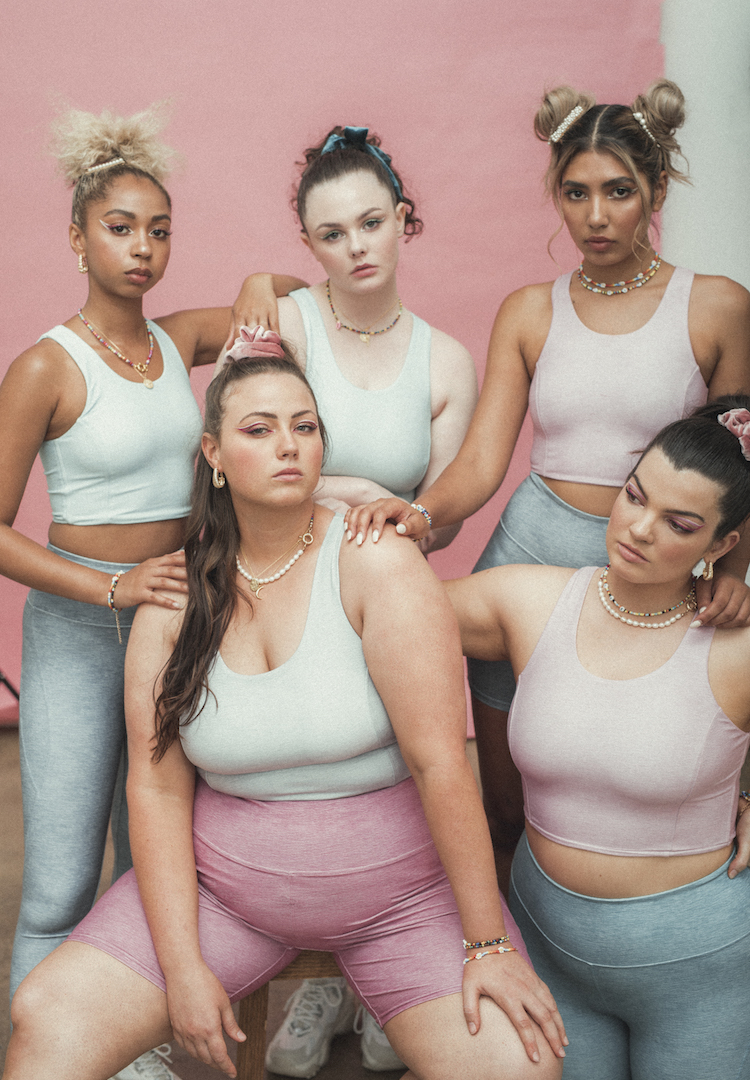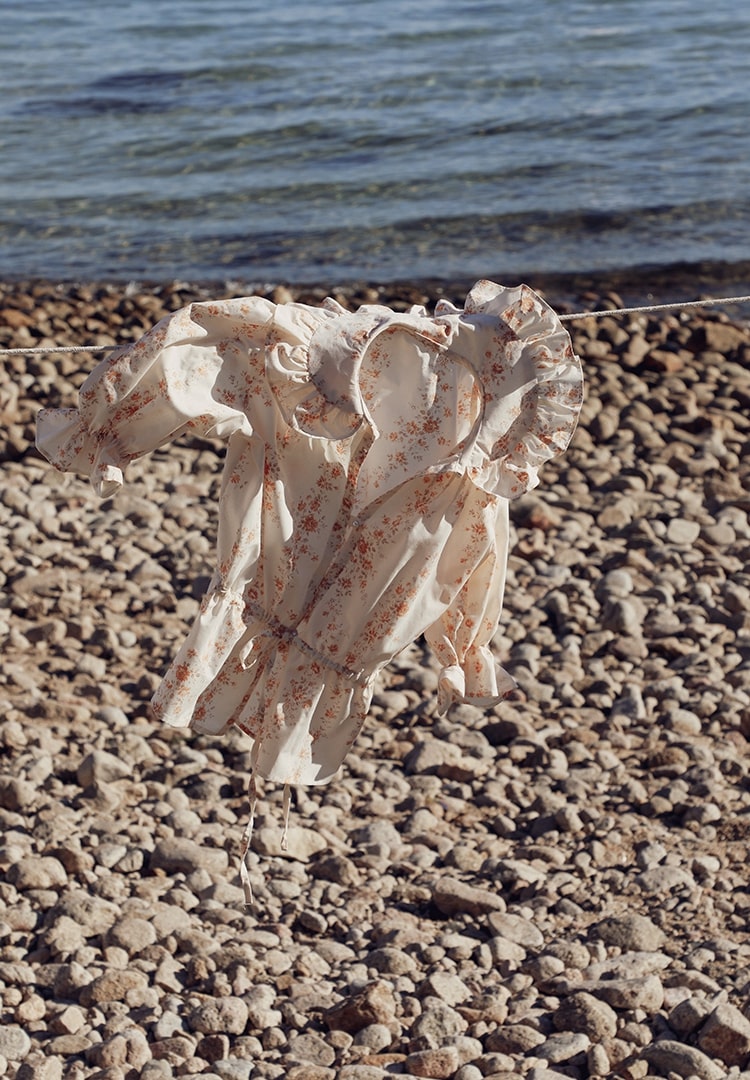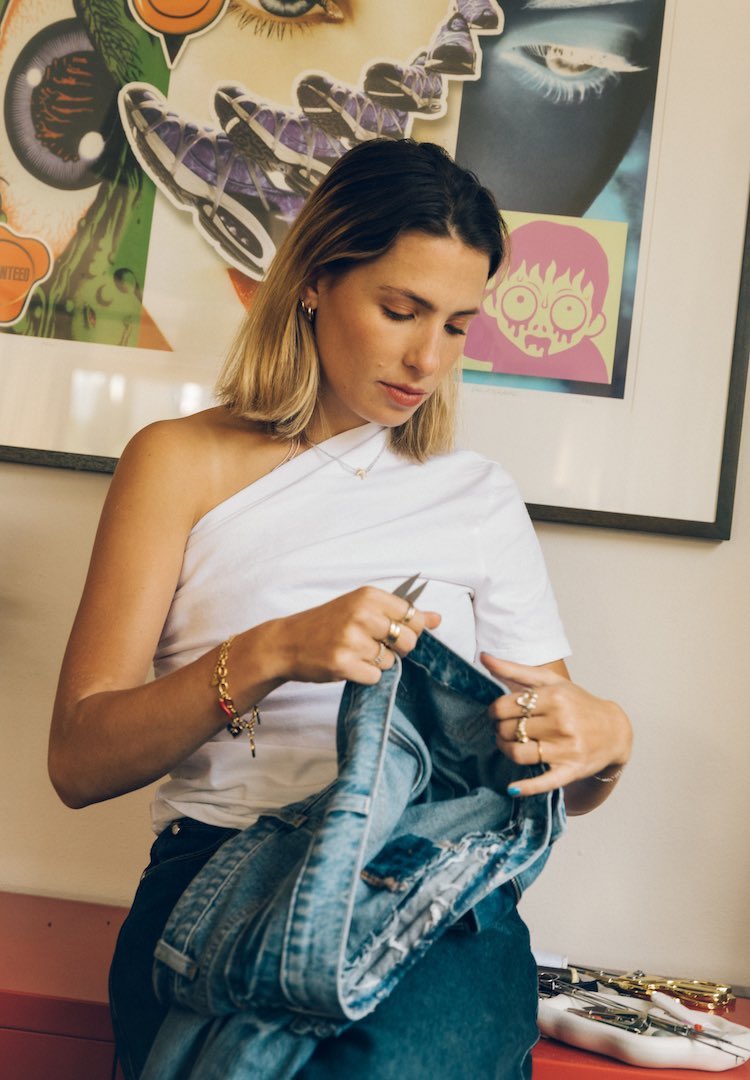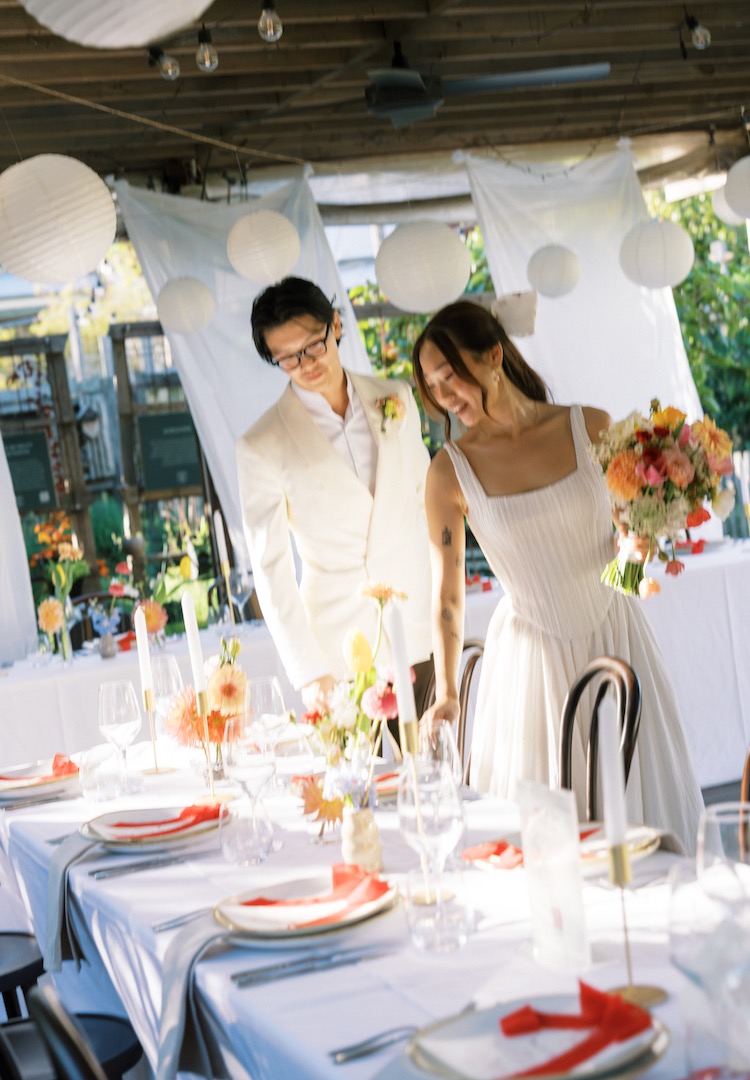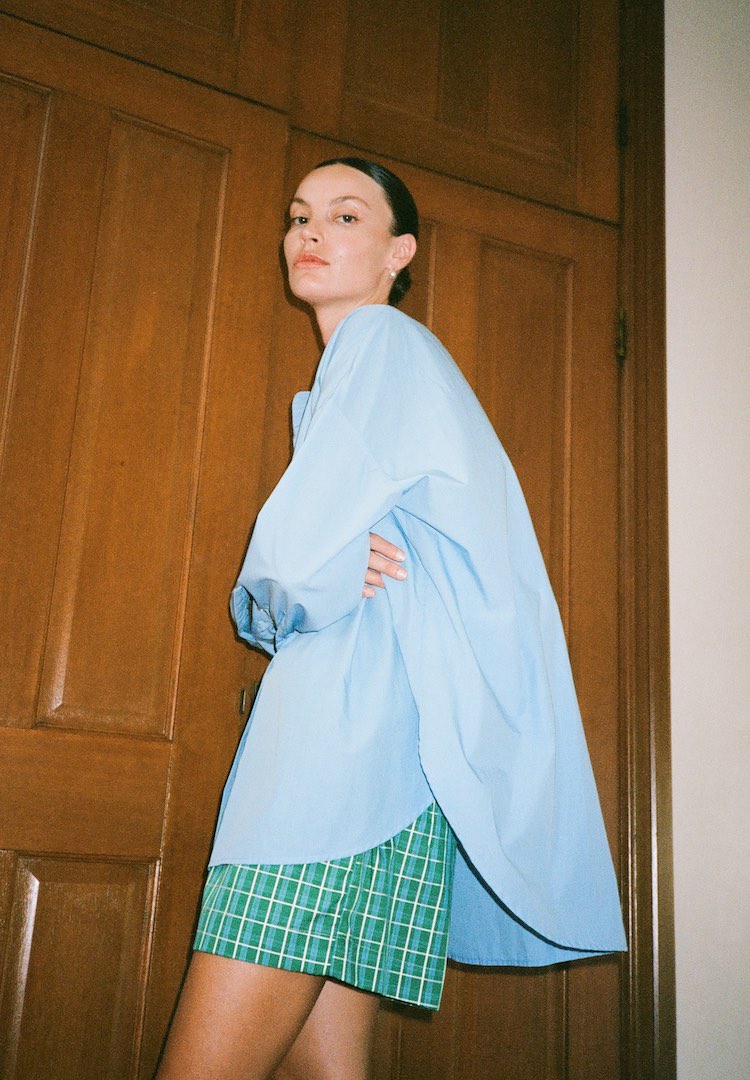A discussion with my mum about our joint fashion label, Jonei
WORDS BY BAILEY JONES
The mother-daughter duo on home-sewing and starting their own slow-fashion brand.
Anyone who knows me will know that my mum and I are close, some would say extremely close. It’s something I have always felt immensely grateful for. She’s a built-in best friend and, as of April this year, a built-in business partner.
We are both passionate about sustainable fashion, so much so, that we created a slow-fashion brand, Jonei. But how did we get here? I interviewed my mum (and she interviewed me) about how we started our label, how we have each evolved as home-sewers and how our experiences differ.
Hello, Mum.
Hello, Bailey.
So, you’ve been sewing for over 30 years now. Why did you learn to sew?
I learnt from my mother. Well, actually, let’s go way back. I made my first thing, which was dolls clothing when I was about seven years old. They were so ridiculous, they were two triangles sewn together at various points, so arms and a head could fit. You know when you draw a stick figure and they have a triangle dress? So, basically, I just thought that’s how it worked. Anyway, Mum said it was fantastic and that I should take it into school to show my teacher and the other kids teased me. They said it was stupid.
So cruel.
Oh, they were probably right. Anyway, from there, my grandmother bought me a sewing machine and all of these remnants of fabrics because she knew how much I loved it. So it was kind of just one of those things. Other kids wanted to draw and paint and I naturally wanted to sew. But my mum was a neat freak and insisted she could make things for me quicker than I could and as a result, I didn’t sew much as a teenager. Then when I got pregnant, I was still only 22 at the time, Mum being a traditional kind of mum, said I should make some voile nightgowns for my baby. She taught me how to sew them too. They had pin-tucking in the front and lace trim.
Sounds a bit like something we would make for Jonei.
Exactly, it was a bit like one of our Jonei blouses. Anyway, we made a lot of those and then she died shortly after. It was one of those things where I had the sewing machine and I knew the basics of how to sew but I essentially had to nut out the rest from there. I loved it though, it kept me sane, it still does. Being such a young mum and being home all the time it was a creative outlet I could have. It was also just incredibly handy throughout my life. We didn’t have a lot of disposable income when you girls were little and so making clothes myself was the only way I could dress you up in cute outfits. Then when you girls became teenagers, more so India [Bailey’s sister], vintage clothing wasn’t as accessible as I think it is now and so I started making clothing that looked vintage. Again, I went through a period when India was in high school where I didn’t have a whole lot of money to spend on clothing and she was going to various parties every week, so I made her dresses for that too. You know, you girls were adamant on being, god what do they call them?
Special little snowflakes?
Yes! That’s right. You wanted to dress uniquely so homemade and vintage clothing were just the best ways to do that. Honestly, I think I counted once and India has like 20 dresses all a-line, same pattern but just in a different fabric.
Wow, see I find that so interesting. It just kind of strikes me as very retro. The idea of this girl who has found her style of dress that really suits her and then her mum makes her a copy of it in every different colour.
Yeah well, that was pretty much what I did! Constantly finding remnants of interesting fabrics and finishing them off with vintage lace. Then you came along and it was the same deal.
I’m also wondering at this point, whether any of your friends were making clothes for their kids too? It does strike me as old-fashioned in a way, so I want to know whether it was a little odd for the times?
No, no one. It just wasn’t a cool thing to do when I was younger. I was pretty sheepish about it. I mean, my close friends would know I made mine and my kid’s clothes and they would be complimentary, but it wasn’t something I advertised.
Which, honestly, from my experience seems like such a flip. Now if I’ve made something and I’m wearing it my friends seem quite impressed. There’s a real kind of gratification in it now and people are excited for you that you can make your own clothes. But I guess it just wasn’t the style then.
No, it was really about fast fashion. I mean, you could just start to get clothing out of China, that was a fairly novel thing back when I was younger.
So that was the new exciting thing?
Yes, having access to cheaper clothes and more of them was what people were into and look where it got us, frankly.
Now, fast forward 20 years and we’re now making clothes out of our home for other people. Why do you think the homemade clothing movement is so important?
Well, I think it’s as simple as the fact that there is, thankfully, a giant swing against fast-fashion. Customers want to know who made their clothing and they also want to know that what they’re wearing isn’t contributing to the environmental impact. Also the wastage too, in the fact that we’re finding found-fabric too. There’s already a lot of ‘stuff’ out there in the world and I think we have a certain level of responsibility to do what we can with what we have instead of contributing to the world’s excess.
Right, and while we’re on the subject, we toiled with a few business model ideas before ultimately deciding to use found fabric. What was the key reasoning for making that decision?
Well, honestly there are so many reasons why we decided on found fabric. The reason I just mentioned, the upcycling component is crucial for us, but also aesthetically. You know, a lot of our pieces are inspired by vintage fashion and what better way to create that air of nostalgia than to use vintage fabric to bring it to life. The perfect vintage blouse is often really hard to find, so in a way, I see it as us making that look more accessible to a larger group of people as well.
That’s right and we also use a lot of upholstery fabric, which also I think helps to bring a new element to the clothing. The textures and the quality of the garments just become a little more unique, which I love too. It always reminds me of those washing lines we saw around Europe, with the tablecloths and bed linen on display. I always found that so beautiful.
Right, exactly, all of those thoughts contributed too. When we first decided to use found fabric it was as a way to reduce waste in the toiling process. I remember when you were at university, especially in the last year when you made so many pieces, you hated the amount of calico you had to use.
Yes, exactly. To draft a piece of clothing you had to use this brand new unbleached cotton, which even once you got the silhouette and everything right, you would never wear that piece. It just always felt like a giant waste to me. So we thought we’d make it out of upcycled fabric and even if something wasn’t right to sell I could still wear it myself.
Yes and so, that’s how the idea began. It was first as a means to reduce waste and then we found that we loved the look of it and it enhanced our clothing. It often dictates what we make too. Now to ask you a few questions, Bailey.
Sure.
You just graduated from RMIT’s Bachelor of Fashion Design.
Yes, last year.
And did you always know you wanted to start a brand?
Not exactly. I always knew I was interested in fashion, I decided I wanted to study fashion at RMIT when I was about 14 from memory. So, I always knew I wanted to do something in fashion but I don’t think I was set on having a brand. I wanted to be a designer for an established fashion house at one point and then I decided I wanted to work at a fashion publication. Luckily, I interned a lot during university, which was so beneficial. It helped me understand what I wanted to do once I left school. I enjoyed every single internship, but I found I wanted to do it all in a way and cherry-pick my favourite aspects of each job. Finally, I decided that to work in design, styling, creative direction, marketing etc, I would be most suited to having a small brand where you could have at least co-stewardship and be able to put all of your collective interests into one big melting pot.
What motivates you to have a brand now?
Like anyone who is studying fashion, I had a bit of a crisis of faith once I realised just how detrimental fashion can be to the environment. You know, it’s the second dirtiest industry in the world, which is a very daunting prospect to come to terms with. I ultimately decided that it’s better to stay in the industry and try to do something to help the situation, rather than abandon it and put it in the too-hard basket. So, I think the way that I thought I could create the most change was to create a sustainable, slow fashion label.
We decided to be very small and slow, especially in the beginning. Do you think you can see the business model changing at any stage and what would that look like?
Honestly, I think in the beginning we decided to be as ad hoc as possible. To have a low amount of investment and make pieces as we went. We just saw it as a necessary way to get a sense of what styles our customers liked before creating numerous units of one particular piece. It can be such a risk, not only financially but also morally, if no one likes it, no one wears it and it is essentially waste. So that was a huge motivation for us to start slow and small. Though, as time goes by I can’t see us changing much.
Yes, I agree. We started as a way to get a sense of things but the more we engage in the slow fashion movement, the more passionate and committed to it we become.

